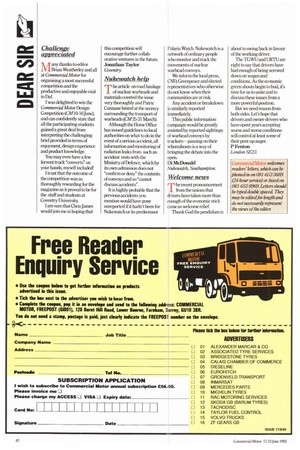Nukewatch help
Page 44

If you've noticed an error in this article please click here to report it so we can fix it.
'p he article on road haulage 1 of nuclear warheads and materials covered the issue very thoroughly and Patric Cunnane hinted at the 92crecy sormunding the transport of warheads (CM 25-31 March).
Although the Home Office has issued guidelines to local authorities on what to do in the event of a serious accident, all information and monitoring of radiation leaks from such an accident rests with the Ministry of Defence, which by its own admission does not "confirm or deny" the contents of convoys and so "cannot discuss accidents".
It is highly probable that the previous accidents you mention would have gone unreported if it hadn't been for Nukewatch or its predecessor Polaris Watch. Nukewatch is a network of ordinary people who monitor and track the movements of nuclear warhead ultivoys.
We inform the local press, CNA Greenpeace and elected representatives who otherwise do not know when their communities are at risk.
Any accident or breakdown is similarly reported immediately.
This public information campaign would be greatly assisted by reported sightings of warhead convoys by truckers—passing on their whereabouts is a way of bringing the debate into the
OpelL
Di McDonald Nukewatdt, Southampton
















































































